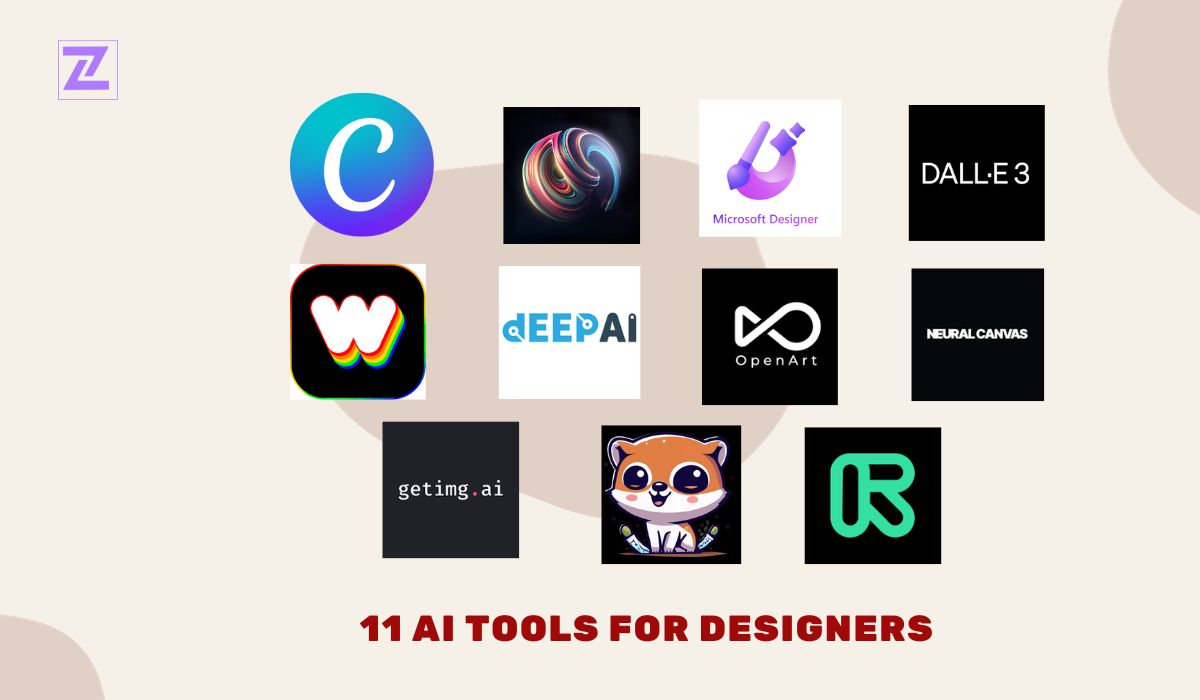
In the field of design, Artificial Intelligence (AI) tools have emerged as indispensable assets, reshaping traditional approaches and fostering innovation. The integration of AI in design processes has not only streamlined tasks but has also unleashed new dimensions of creativity. In this era of rapid technological evolution, staying ahead means leveraging cutting-edge tools. Here, we delve into the top 11 must-use AI tools for designers in 2023, exploring their features and the transformative impact they bring to the design landscape.
1. Canva AI Magic Design:
Canva's AI Magic Design stands out as a user-friendly graphic design platform, redefining accessibility in design creation. Unlike traditional software, Canva prioritizes ease-of-use, allowing users to craft visually stunning designs without prior design experience. The AI-powered Background Remover tool simplifies tasks like removing backgrounds with a single click. Notable features include Magic Media, Magic Eraser, Magic Edit, Magic Grab, and more, collectively empowering users to effortlessly create captivating designs.
2. Microsoft Designer:
Microsoft Designer, also known as MS Designer, is an innovative tool harnessing advanced AI technology to generate visually striking graphics and templates. Whether it's engaging social media posts, eye-catching flyers, or beautiful invitations, MS Designer offers a user-friendly interface with features like customizable templates, typography options, image manipulation, and efficient file management. It's a go-to tool for those seeking to elevate their design game with ease.
3. Adobe Sensei:
Adobe Sensei is a sophisticated AI and Machine Learning technology integrated across the Adobe platform. With applications spanning Adobe Experience Cloud, Creative Cloud, and Document Cloud, Adobe Sensei brings intelligent features to software like Premiere Pro and After Effects. Smart Tags, Smart Crop, Visual Search, and Automatic Text Summarization are among its capabilities, providing digital marketers and designers with powerful tools for content creation and personalization.
4. DALL.E 3:
DALL.E 3, an advancement in text-to-image technology, showcases improved nuance and detailed recognition. Developed by OpenAI, it excels in transforming textual descriptions into precise visuals. Noteworthy features include the generation of unique and creative images, an understanding of complex language, and the ability to manipulate multiple concepts for image creation. With high-resolution outputs and continuous learning through machine learning algorithms, DALL.E 3 is a game-changer for image generation.
5. WOMBO Dream – AI Art Generator:
WOMBO Dream introduces a user-friendly text-to-image AI generator that effortlessly transforms written descriptions into digital artwork. Ideal for creating art for NFTs, social media, or marketing materials, WOMBO Dream offers over 90 art styles, customizable options, and features like NFT remixing and watermark-free downloads. Its simplicity and versatility make it an excellent choice for both beginners and experienced creators.
6. Deep AI:
Deep AI Suite, a tool for image generation based on text prompts using machine learning, offers a great learning experience for beginners. While the free version has limitations, it provides insights into AI reinforcement learning. Features include reducing data dimensionality, removing noise, and preventing overfitting, making it a valuable tool for those looking to understand the fundamentals of AI image generation.
7. OpenArt:
OpenArt revolutionizes art creation with cutting-edge technologies like Stable Diffusion, making the process accessible to everyone. The platform offers a range of art styles, an intuitive interface, and extensive customization options. Whether you're an experienced artist or a novice, OpenArt provides tools to bring artistic visions to life, breaking the boundaries of creativity.
8. Neural Canvas:
Neural Canvas, a state-of-the-art digital illustration generator powered by AI, stands out for creating unique and high-quality illustrations. With features like choosing from 100 different styles and characters, selecting moods and styles, and creating AI comics or e-books, Neural Canvas caters to various design needs. Its powerful features and intuitive interface make it a valuable asset for designers in different domains.
9. AI Comic Factory:
AI Comic Factory is a groundbreaking innovation designed for modern cartoonists. With features like creating comic books with AI assistance, choosing from different styles and genres, and editing AI-generated comics, it simplifies the comic creation process. Users can share and export their comics as PDF files, fostering a community of creators within the app.
10. RunwayML Gen-2:
RunwayML, with its Gen-2 upgrade, introduces advanced capabilities for generating videos using text, images, or video clips. The new features include a Motion brush for animated images, synthesizing videos in any style with a text prompt, and content-guided video synthesis. With enhancements in text-to-video and image-to-video algorithms, RunwayML Gen-2 elevates the quality of generated videos.
11. GetIMG.AI:
Getimg.ai emerges as a powerful AI-powered tool for effortless image creation and modification. Packed with features like DreamBooth for personalized AI models, Outpainting for generating new elements seamlessly, and Inpainting for removing unwanted objects, it caters to diverse design needs. Whether you're a beginner or a professional, Getimg.ai provides the tools to create stunning images with ease.
The fusion of AI with design has ushered in a new era of possibilities. The top 11 AI tools highlighted here represent a diverse range of applications, from graphic design to image generation and video synthesis. As designers navigate the ever-evolving landscape, incorporating these tools into their workflows can unlock unparalleled creativity and efficiency. Embracing these AI tools not only streamlines design processes but also paves the way for groundbreaking innovations in the world of visual creation.